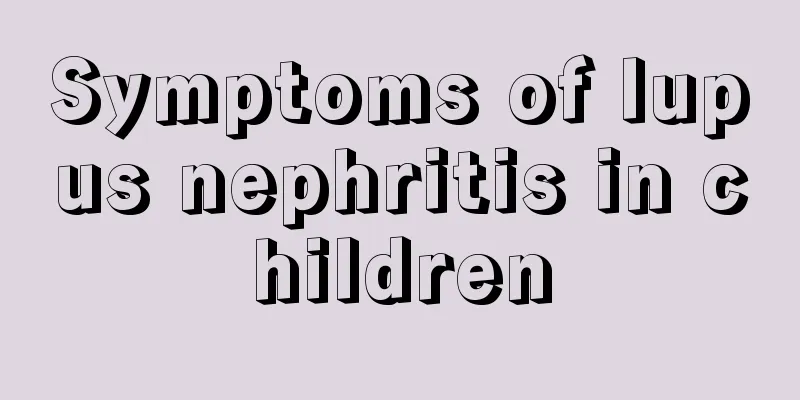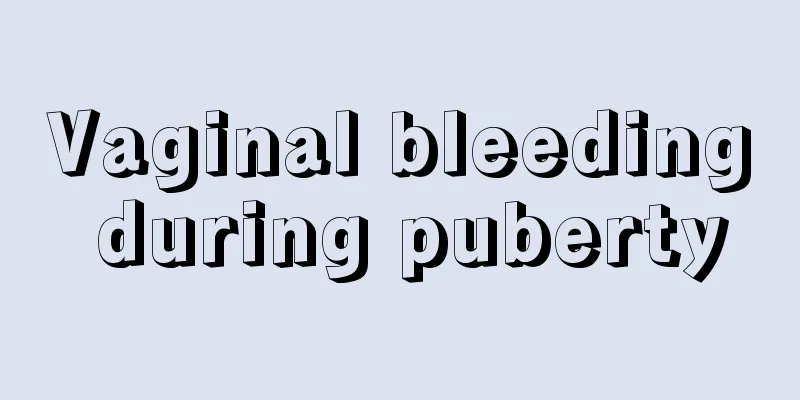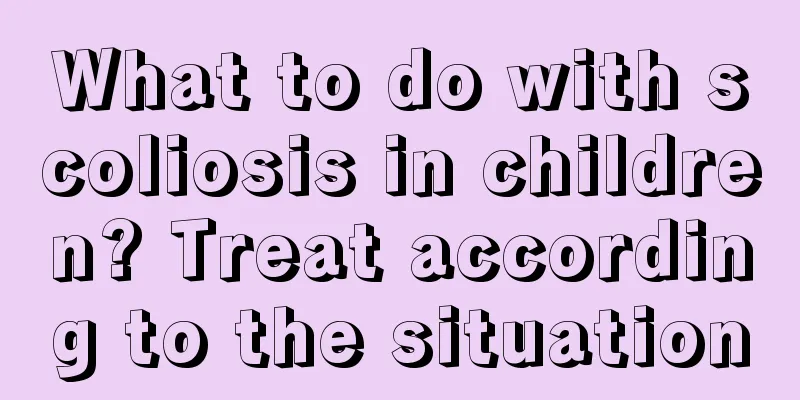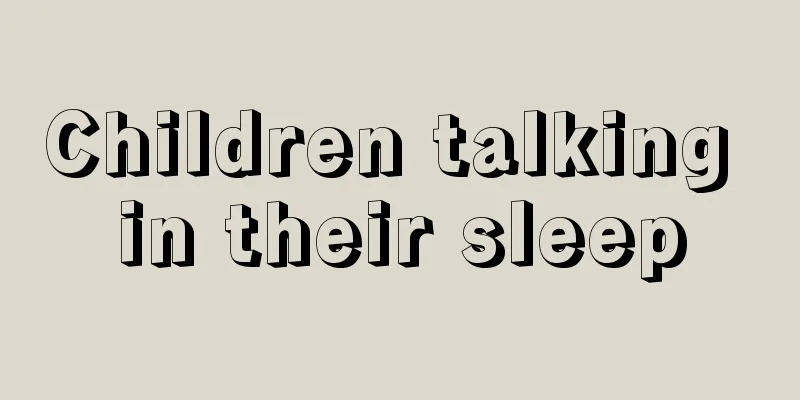Symptoms of lupus nephritis in children

|
Lupus nephritis in children is a type of disease that causes impaired renal function, which is mainly caused by one's own immunity. No matter what type of disease it is, it has its own unique cause and symptoms, because only in this way can we distinguish what type of disease it is. Therefore, we can conduct targeted research on methods to prevent children from suffering from such diseases. Only by clearly understanding the symptoms can we identify the disease. We know that children's immunity is very weak compared to normal people, so it takes some time for children to resist external infectious diseases. Only by cultivating children's bodies to be able to effectively resist external pathogens can we better treat diseases. So what are the symptoms of lupus nephritis in children? Lupus nephritis, also known as systemic lupus erythematosus nephritis, refers to patients with systemic lupus erythematosus who have clinical manifestations of renal disease and abnormal renal function, or who are only found to have glomerulonephritis lesions during renal biopsy. Systemic lupus erythematosus is a recognized autoimmune disease, and its lesions mostly involve several systems or organs. LN lesions in children are often severe and difficult to treat. Some patients with SLE mainly present with extra-renal symptoms and mild renal damage; while another part of patients present with renal damage as the main manifestation with no obvious extra-renal symptoms. The latter are easily misdiagnosed as primary glomerular disease. Clinical manifestations 1. Systemic manifestations There are many types of fever, with more than 80% having fever. The fever types include high fever, low fever, intermittent or continuous fever. All of them had varying degrees of loss of appetite, fatigue and weight loss. 2. Skin and mucous membrane symptoms 70% to 80% of children with lupus have skin and mucous membrane damage. The typical butterfly-shaped erythema is only seen in 50% of cases. The rash is located on the cheeks and nose bridge. It is bright red with clear edges and is mildly edematous erythema. Capillary dilation and scales can be seen. When the inflammation is severe, blisters and scabs may be seen. After the erythema subsides, there are generally no scars or pigmentation. 3. Other skin and mucous membrane symptoms Children are less likely to have discoid erythema than adults, and may have hemorrhagic rash, macular rash, livedo reticularis, urticaria, purpura, oral ulcers, and nasal mucosal ulcers. The child's skin lesions worsen or new rashes appear after exposure to sunlight. About 10% to 20% of children never show any rash. 4. Musculoskeletal symptoms 70% to 90% of children have joint and muscle symptoms, such as arthritis and joint pain, and about 1/3 of children have myalgia. Arthritis can be either migratory or persistent, and joint destruction and deformity are rare. 5. Cardiovascular symptoms Pericarditis, myocarditis, pancarditis and various small vessel vasculitis may occur. Raynaud's phenomenon is rare in pediatrics. In recent years, we have begun to pay attention to cases of coronary arteritis and myocardial infarction in sick children. 6. Serositis 30% of children develop polyserositis, such as sterile pleurisy, peritonitis, acute lupus pneumonia and pulmonary hemorrhage. The above lesions may manifest as acute fever, dyspnea, cough, chest pain, pleural effusion; abdominal pain, diarrhea, nausea, vomiting, ascites. If intestinal necrosis or perforation occurs, surgical treatment is required; severe pulmonary hemorrhage can lead to rapid death. 7. Hematological symptoms Most of them have varying degrees of anemia. 50% of the children have a decrease in peripheral blood white blood cell count, 15% to 30% of the children have thrombocytopenia, and a small number of children have thrombocytopenia as the first symptom. 8. Neurological symptoms Lupus encephalitis is a serious complication of SLE, with a relative incidence of 30%. 5% of children present with neurological symptoms as the first symptom, manifested as diffuse brain dysfunction (consciousness, disorientation, intelligence, memory decline, mental abnormalities, etc.) or localized brain dysfunction, such as epilepsy, cerebrovascular accident, hemiplegia, and aphasia. Peripheral neuropathy is rare and manifests as multiple peripheral neuritis. 9. Other symptoms There was hepatomegaly (75%), abnormal liver function, and splenomegaly (25%). Superficial lymphadenopathy (about 50%). Eye symptoms such as scleritis, iritis, and retinitis may occur. 10. Kidney symptoms Lupus nephritis is common in SLE and is a key factor that threatens long-term quality of life. The above introduces some symptoms of lupus nephritis in children. Whether it is the whole body or other parts, even invisible blood vessels will show symptoms different from normal people. Therefore, only by clearly understanding what symptoms the disease will manifest can we discover the disease in time and better research targeted methods for treatment. |
<<: Prevention of acute bronchitis in children
>>: What is teeth grinding in children?
Recommend
How much weight does a newborn baby gain in one month?
We all know that the birth of a baby always bring...
Trachoma symptoms in children
Whether it is a middle school or an elementary sc...
What to do if your newborn baby wakes up easily
For parents, their babies are their treasures, an...
Eight month old baby
Watching the baby grow up day by day is the happi...
How to prevent allergic urticaria
Although urticaria is a common skin disease, it i...
What are the cough and phlegm-relieving soups for children?
When a child has a cough or is elastic, as a moth...
What happens when the baby has convulsions after a fever?
Babies are the apple of our eyes. We take care of...
What should I do if my child's lips are swollen?
Some young children have abnormal problems in the...
What should children eat to reduce internal heat?
Nowadays, the arrival of a baby can be said to ha...
Treatment for dry and cracked skin on the legs
Maybe we all don’t know much about the problem of...
Red spots on the child's face
Children are in contact with their parents for a ...
Does a fake pacifier have any effect on the baby?
A fake pacifier is actually what we often call a ...
My baby's face is red and hot. What's the problem?
One side of the baby's face is always very re...
At what age is it better to have hernia surgery for children?
Current medical research has shown that if a chil...
What is vaginal bleeding in newborns?
Some newborns have vaginal bleeding, which makes ...









